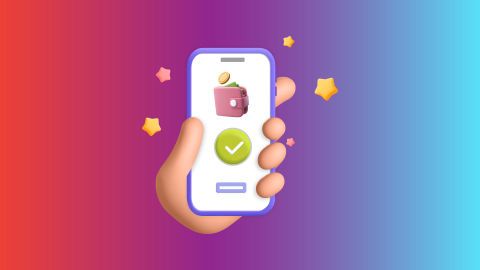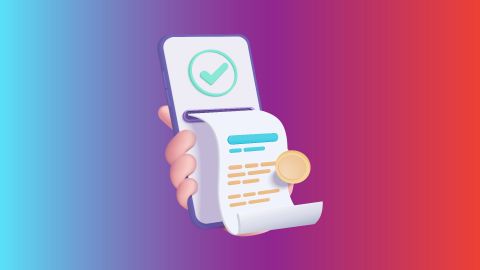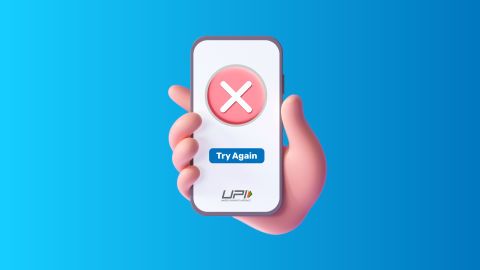Definition – Interoperability
Interoperability, as defined by the Reserve Bank of India (RBI), refers to the technical compatibility that enables a payment system to operate harmoniously with other payment systems. This means that different systems can seamlessly connect, communicate, and exchange information to complete payment transactions. It fosters the seamless execution, clearance, and settlement of payment transactions across diverse systems.
The importance of interoperability lies in its ability to foster adoption, encourage innovation, and improve efficiency for end-users. By allowing different payment systems to work together, it creates a more unified and accessible financial ecosystem. This ultimately benefits both consumers and merchants by simplifying transactions and expanding access to digital payment solutions. The ongoing fusion of
UPI and
CBDC exemplifies this, aiming to streamline the use of the retail digital rupee.
Understanding QR codes
- A Quick Response (QR) code is a two-dimensional barcode consisting of black squares arranged in a grid on a white background.
- These codes are interpretable by imaging devices such as cameras on smartphones and dedicated QR code scanners.
- QR codes carry information about the item to which they are attached, be it a product, a website URL, or payment details.
- In the context of payments, QR codes provide an alternative contactless payment channel, allowing merchants to directly receive payments into their bank accounts.
- The versatility of QR codes makes them a convenient tool for initiating transactions, as they can be easily generated and scanned using readily available devices.
- With UPI-CBDC interoperability, transactions can now be initiated using a single QR code.
What is a Central Bank Digital Currency (CBDC)?
- CBDC stands for Central Bank Digital Currency.
- It is a legal tender issued by the central bank (in India, the RBI) in digital form.
- It is essentially the digital equivalent of physical currency notes and coins.
- You can exchange eRs. for physical currency notes.
- Unlike fiat currency stored in banks, CBDC is a direct liability on the RBI's balance sheet.
- This means you do not necessarily need a bank account to own a digital rupee (eRs.).
- The digital rupee is a tokenised digital variant of the rupee, issued by the RBI as CBDC.
- The eRs. is stored within a digital wallet linked to a customer’s existing savings bank account.
What is the Unified Payments Interface (UPI)?
| Feature | Description |
| Definition | UPI is India's mobile-based fast payment system that allows customers to make round-the-clock payments instantly. |
| Virtual address | Payments are made using a virtual payment address (VPA) created by the customer, eliminating the need to share bank account details. |
| Risk reduction | Eliminates the risk of the remitter sharing bank account details with the receiver. |
| Payment types | Supports both Person-to-Person (P2P) and Person-to-Merchant (P2M) payments. |
| Functionality | Enables users to send or receive money easily and quickly. |
| Key benefit | Promotes financial inclusion by providing a user-friendly and accessible digital payment option. |
| Widespread use | UPI has become one of the most popular payment methods in India, with millions of users and merchants adopting it. |
| Interoperability | Its interoperability with other payment systems, including the upcoming integration with CBDC, further enhances its utility and reach. |
The interoperability between UPI and CBDC
| Feature | Description |
| Core concept | Compatibility of all UPI QR codes with CBDC applications. |
| Transaction process | Users can now scan any UPI QR code for transactions using their CBDC-linked wallets. |
| Single QR code | Transactions can be initiated using a single QR code, simplifying the payment process. |
| Digital Rupee (eRs.-R) | The digital rupee, issued by the RBI as CBDC, is stored within a digital wallet linked to a customer’s existing savings bank account. |
| Direct account link | While UPI directly connects to the customer’s account, the digital rupee is a tokenised digital variant of the rupee. |
| Enhanced integration | Banks are boosting digital rupee (eRs.-R) adoption by integrating UPI QR codes with CBDC apps. |
| Merchant convenience | Merchants can accept digital rupee payments using their existing UPI QR codes, reducing the need for additional infrastructure. |
Significance of interoperability
| Aspect | Description |
| Enhanced user experience | Simplifies the payment process, allowing users to seamlessly make transactions using any UPI QR code, enhancing user satisfaction. |
| Accelerated adoption | Promotes the adoption of the retail digital rupee by leveraging the popularity of UPI, aligning with government objectives to drive digital currency usage. |
| Merchant-friendly | Eliminates the need for merchants to manage separate QR codes for digital rupee payments, lowering the entry barrier for businesses to accept digital currency. |
| Expanding inclusion | Extends financial inclusion efforts, particularly in underserved regions, by making it easier for users and merchants with limited exposure to digital payments to participate in the digital economy. |
| Efficiency and cost savings | Reduces operational costs for both users and merchants by simplifying accounting and transaction management for businesses. |
How will it drive CBDC adoption?
| Factor | Description |
| Existing UPI ecosystem | Leverages the widely used UPI payment method, with over 70 mobile apps and 50 million merchants accepting UPI payments, setting the stage for the retail digital rupee’s growth. |
| Customer and merchant base | RBI reported 1.3 million customers and 0.3 million merchants using eRs.-R in July, with daily transactions ranging from 5,000 to 10,000. |
| Bank integration | Prominent banks, including State Bank of India, Bank of Baroda, Kotak Mahindra Bank, Yes Bank, Axis Bank, HDFC Bank, and IDFC First Bank, have introduced UPI interoperability on their digital rupee applications. |
Benefits for users
| Benefit | Description |
| Seamless transactions | Users can effortlessly execute digital rupee transactions by scanning any UPI QR code, eliminating the need for multiple apps or QR codes. |
| Wider acceptance | Users are no longer restricted to specific QR codes; they can utilise their digital wallets linked to UPI for transactions at various merchants, increasing flexibility. |
| Financial inclusion | Ensures that users, including those in remote areas, can easily access and use the digital rupee without specialised infrastructure or additional QR codes, promoting financial inclusion. |
| Reduced transaction costs | Users can avoid extra fees associated with using multiple payment platforms, making digital rupee transactions more cost-effective. |
| Streamlined management | Users can consolidate their digital transactions within a single digital wallet, simplifying financial management. |
Benefits for merchants
| Benefit | Description |
| Ease of adoption | Merchants can accept digital rupee payments without the complexity of creating and maintaining a separate QR code. |
| Expanded customer base | With interoperability, merchants can cater to a broader range of customers using digital rupees, regardless of whether customers possess a specific QR code. |
| Reduced infrastructure costs | Merchants save on expenses related to setting up and maintaining additional payment infrastructure. |
| Efficient settlement | The integration allows for efficient settlement of digital rupee payments, whether or not the merchant has a CBDC account, ensuring prompt and secure payment receipts. |
| Increased sales | Simplified payment options often lead to smoother and quicker checkouts, potentially boosting customer satisfaction and increasing sales for merchants. |
Conclusion
The convergence of UPI and
CBDC through interoperability marks a transformative phase in the realm of digital payments. With the fusion of two powerful platforms, the retail digital rupee is poised to gain widespread adoption, revolutionising the landscape of digital transactions in India.
This integration simplifies payments for users and merchants alike, reduces costs, and expands financial inclusion. The interoperability leverages the existing robust UPI infrastructure to accelerate CBDC adoption, promising a more efficient and inclusive digital economy.




